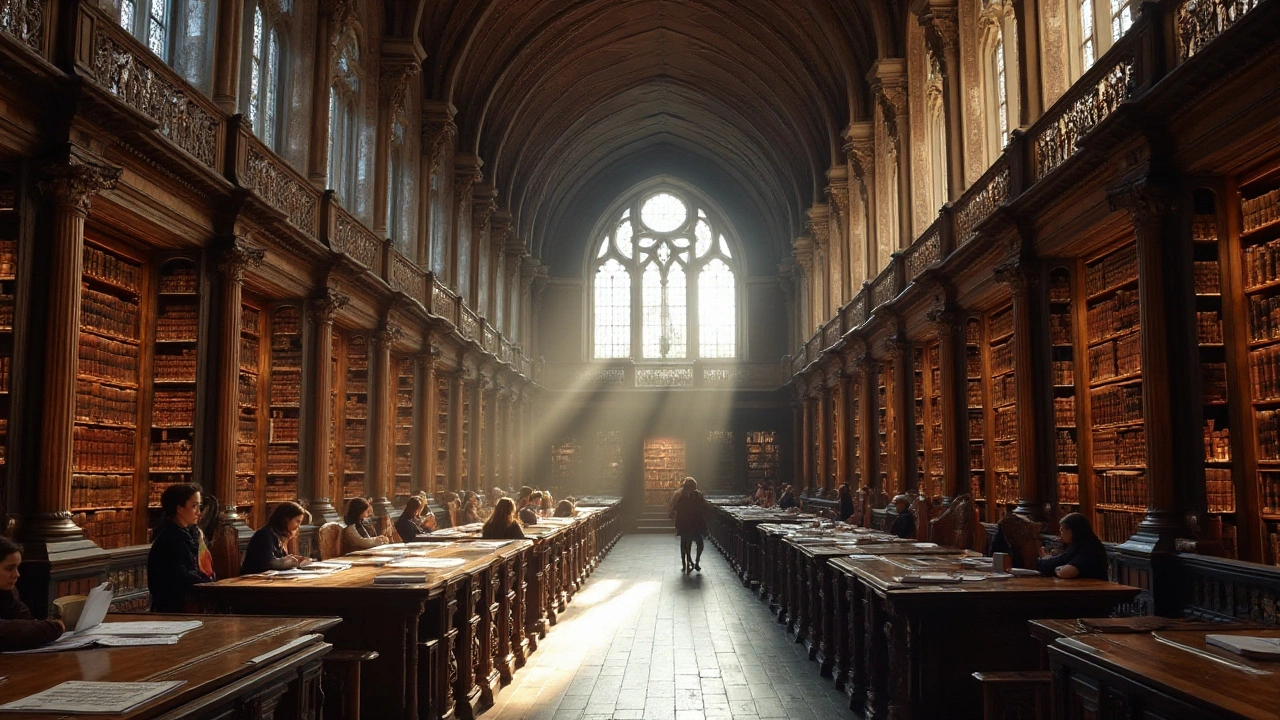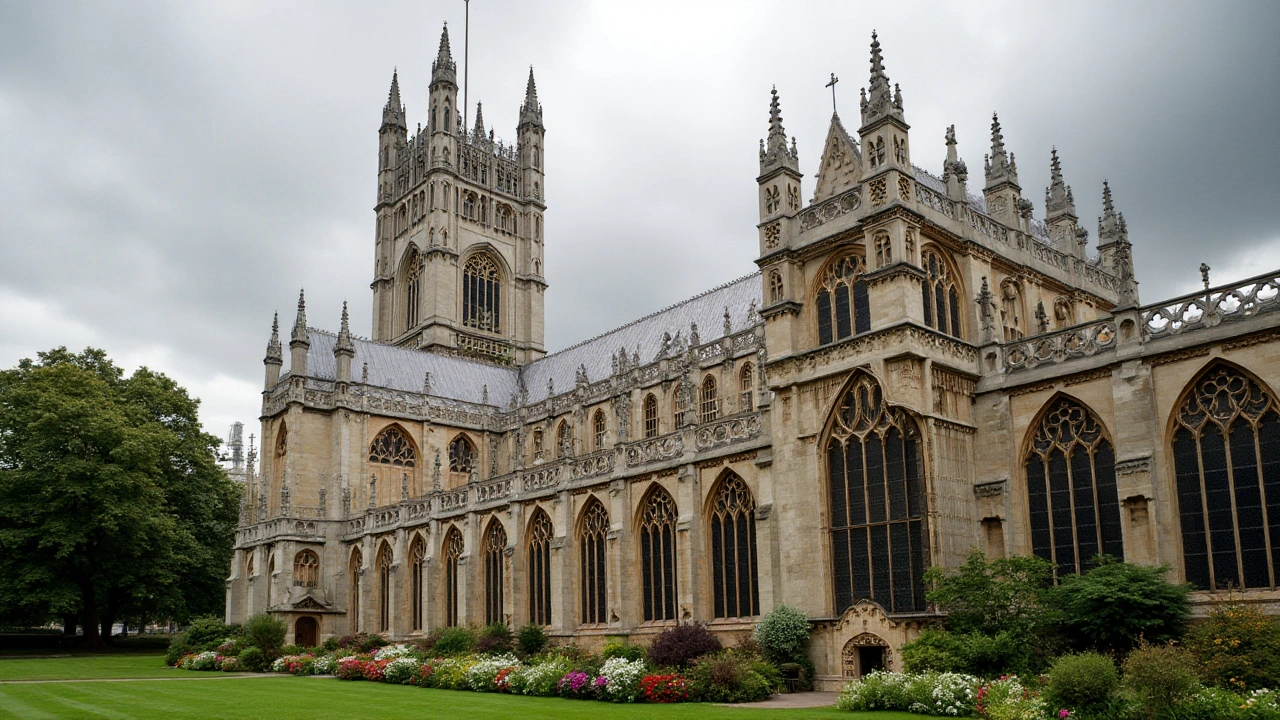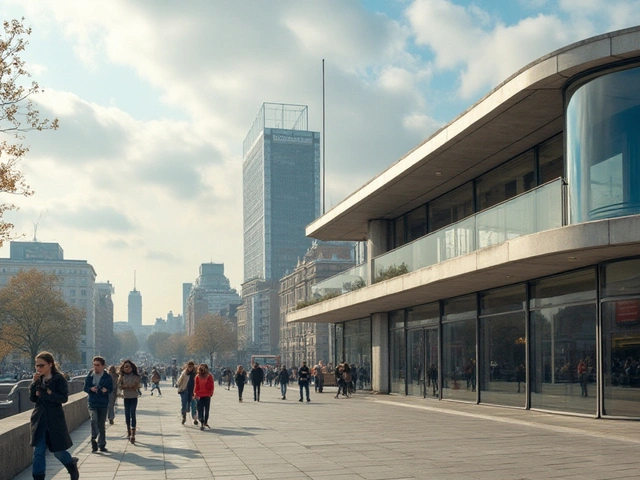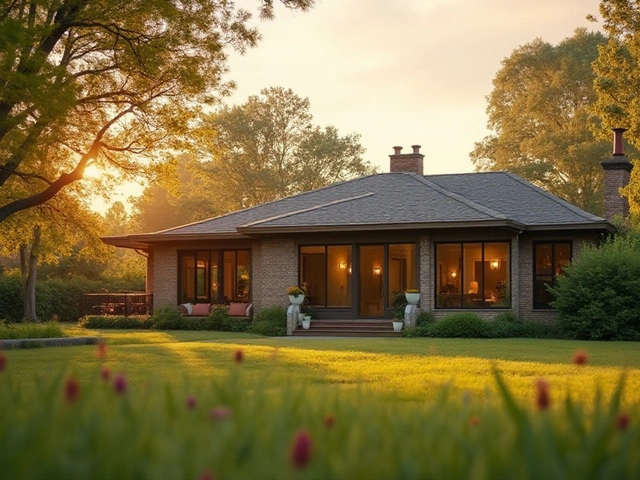For those who have ever marveled at the grandeur of a towering cathedral or the delicate beauty of intricate stone carvings, Gothic Revival architecture holds a certain allure. This style, born in the late 18th century, sought to revive the grandeur of the medieval Gothic style. It's a celebration of vertical lines, detailed ornamentation, and dramatic contrasts of light and shadow.
Inspired by the original Gothic architecture of the Middle Ages, Gothic Revival took root in Europe and later spread to other parts of the world. Architects of the time embraced features such as pointed arches, ribbed vaults, and flying buttresses, fusing them with modern construction techniques to create something both old and new.
- History of Gothic Revival Architecture
- Key Features and Design Elements
- Famous Examples Around the World
- Impact on Modern Architecture
- How to Identify Gothic Revival Buildings
- The Cultural Significance of Gothic Revival
History of Gothic Revival Architecture
The Gothic Revival style, also known as Neo-Gothic, emerged in the late 18th century and gained momentum throughout the 19th century. The movement sought to revive the architectural features of medieval Gothic architecture. This era saw a return to the pointed arches, steep gables, and intricate stone carvings that characterized the original Gothic style. Originating in England, Gothic Revival grew as part of the broader Romantic movement, which idealized the past and celebrated beauty, emotion, and nature.
One of the earliest proponents of Gothic Revival architecture was Horace Walpole, an English writer and politician. His home, Strawberry Hill in Twickenham, built in the 1740s, is often considered one of the first Gothic Revival buildings. Walpole's design was inspired by his fascination with medieval architecture, and Strawberry Hill became a model for subsequent Gothic Revival structures. Over time, more architects embraced this style, leading to its spread across Europe and beyond.
The 19th century saw a surge in new constructions as well as restorations of medieval buildings. A prominent example of this is the Houses of Parliament in London, designed by architects Charles Barry and Augustus Pugin. Completed in the 1870s, this iconic structure exemplifies the grandeur of Gothic Revival architecture. Pugin, in particular, was a strong advocate for returning to the Gothic style, believing that it represented the moral and spiritual values of medieval society.
Across the Atlantic, Gothic Revival architecture found favor in the United States and Canada. In the U.S., notable examples include St. Patrick's Cathedral in New York City and the Smithsonian Institution Building in Washington D.C. The style's popularity was driven by its association with academic and religious institutions. Many universities adopted Gothic Revival designs for their campus buildings, a trend that can still be seen today in places like Yale and Princeton.
Statistics show the vast number of Gothic Revival buildings constructed during the style's peak. Victorian society saw Gothic Revival as a way to connect with an idealized past, marked by craftsmanship and detail. This romanticism fueled both public and private projects, from grand churches to residential homes.
"Gothic architecture is not exclusively ecclesiastical nor exclusively civil; it is the architecture of policy, not merely of splendor." - John Ruskin
The rise of industrialization in the 19th century played a role in the proliferation of Gothic Revival architecture. Advances in construction technology made it possible to create elaborate stonework and detailed designs more efficiently. Ironically, while the style harkened back to a pre-industrial past, its spread was facilitated by modern innovations.
As the 20th century approached, the popularity of Gothic Revival began to wane. However, its influence persisted in various forms, influencing other styles and inspiring new movements in architecture. Today, Gothic Revival remains an important chapter in the history of architecture, celebrated for its beauty and its attempt to bridge the past with the present.
Key Features and Design Elements
The Gothic Revival emerged as a movement that sought a return to the architecture of medieval Europe. One of its most distinctive features is the pointed arch. Unlike the simpler Romanesque arch, the pointed arch allows for greater height and a sense of upward movement. This design is not just aesthetic; it also distributes weight more efficiently, allowing for larger windows and taller structures.
Speaking of windows, stained glass is a crucial element in Gothic Revival buildings. These colorful windows often depict religious scenes, adding to the sacred atmosphere of churches and cathedrals. The Rose Window, which is a circular stained-glass window, became a hallmark of this architectural style. The intricate designs of these windows can be both awe-inspiring and deeply moving architectural style.
Another hallmark of Gothic Revival is the emphasis on verticality. Buildings often include tall spires and steeples that seem to reach for the sky. These elements draw the eye upward and create a sense of grandeur and awe. Combined with ribbed vaults, which are arched forms creating a ceiling or roof, these features add to the light and airy feeling of the interior spaces.
"Gothic architecture tends to seek an emotional appeal, a search for lightness and soaring space," notes Robert Campbell, an architecture critic.
Flying buttresses are another key feature. These external supports allow buildings to reach impressive heights without sacrificing stability. First developed in European Gothic architecture, they became integral in the revival. Flying buttresses are not just functional; they also contribute to the aesthetic complexity of Gothic Revival buildings.
Ornamentation in Gothic Revival architecture is rich and varied. Carved stonework featuring flora, fauna, and mythological scenes often adorn doorways, windows, and spires. Gargoyles, originally designed as water spouts, became decorative features that add a touch of whimsy and eerie charm. These finely carved elements bring a touch of historical artistry to modern structures.
Materials Used
Traditional materials like stone and timber are prevalent in Gothic Revival, though innovations allowed for new materials to be incorporated. Cast iron, for example, was sometimes used for intricate details that would be difficult or impossible to carve from stone. Brick was often employed in domestic Gothic Revival buildings, offering a more affordable option for the middle class while maintaining the stylistic integrity of the design.
Roofs in Gothic Revival buildings tend to be steeply pitched and often covered in slate. The steep pitch not only aids in water runoff but also complements the overall verticality of the architecture. Elaborate wooden or stone trusses are often visible in the interior, adding both beauty and structural integrity.

Famous Examples Around the World
When exploring the world of Gothic Revival architecture, several iconic structures come to mind, each standing as a testament to the grandeur and intricate design characteristic of this style. One such example is the Palace of Westminster in London. Built in the mid-19th century, this building combines the elaborate details and vertical lines of Gothic architecture with a modern approach. Sir Charles Barry and Augustus Pugin designed this structure to replace an older building that burned down. The result is a stunning blend of old and new, featuring intricate clock towers, pointed arches, and a massive facade that dominates the landscape. Visitors can easily spot the building's prominent spires and flying buttresses, which are definitive markers of Gothic design.
Another noteworthy example is St. Patrick's Cathedral in New York City. This cathedral is a shining example of how Gothic Revival architecture can blend with urban settings. Built between 1858 and 1878, the cathedral stands in stark contrast to the towering skyscrapers surrounding it. Its design elements include twin spires, intricate stained glass windows, and an awe-inspiring interior that features ornate carvings and ribbed vaults. The cathedral's architect, James Renwick Jr., sought to create a space that could inspire awe and reverence, and he certainly achieved his goal. As visitors walk through the main nave, they are enveloped by the soaring ceiling and intricate details that hallmark Gothic Revival architecture.
Moving to the Southern Hemisphere, St. Mary's Cathedral in Sydney provides yet another compelling example. This landmark was designed by William Wardell in the late 19th century and opened for worship in 1882. With its impressive twin spires, rose windows, and detailed stone carvings, St. Mary's Cathedral captures the essence of medieval Gothic architecture while incorporating elements that resonate with Australia's unique landscape and culture. The interior features marble altars, detailed woodwork, and stunning stained glass windows that fill the space with a kaleidoscope of colors.
An essential characteristic of Gothic Revival works is their ability to blend grandeur with intricate detailing. The Cologne Cathedral in Germany is a prime example of this. The construction of this massive cathedral began in 1248 but wasn't completed until the late 19th century, a testament to the enduring appeal of Gothic design. Visitors flock to Cologne Cathedral to marvel at its impressive spires, huge stained glass windows, and an interior that seems to reach the heavens. As one stands before this architectural marvel, it is easy to see why this style has captivated architects and the public for centuries.
Even in far-flung locations like Canada, Gothic Revival architecture has left its mark. The Parliament Buildings in Ottawa, particularly the Centre Block with its Peace Tower, are striking examples. Designed by Thomas Fuller and Chilion Jones, the buildings were completed in the late 19th and early 20th centuries and feature the pointed arches, ribbed vaults, and elaborate stonework typical of Gothic Revival style. The Parliament Buildings stand as a symbol of Canadian governance, seamlessly blending historical design with the needs of a modern political institution.
In the realm of educational institutions, Keble College at the University of Oxford offers a fascinating case study. Designed by William Butterfield and completed in 1870, the college features polychromatic brickwork, a hallmark of Butterfield's style, combined with the pointed arches and vertical lines characteristic of Gothic Revival. Every corner of Keble College underscores the close relationship between the architectural style and scholarly pursuit.
Impact on Modern Architecture
Gothic Revival architecture has had a profound influence on modern architectural practices, inspiring a renewed appreciation for traditional craftsmanship and complex designs. This style's focus on verticality and ornate details can be seen in many contemporary buildings, particularly those seeking to evoke a sense of grandeur and timelessness. For instance, the iconic Chrysler Building in New York City borrows heavily from Gothic Revival forms, incorporating spires and intricate metalwork that harken back to medieval cathedrals.
One of the most significant impacts of Gothic Revival is its emphasis on vertical lines and space. Modern architects often use vertical elements, such as glass and steel towers, to create a sense of upward movement and openness. The use of ribbed vaults and pointed arches in Gothic Revival style can be seen echoed in the design of many skyscrapers and high-rise buildings, creating a visual link between past and present.
Another way Gothic Revival has influenced modern architecture is through the use of light and shadow. The intricate carvings and detailed facades typical of Gothic Revival create dramatic contrasts, which modern architects often replicate using materials like glass and metal. These contrasts not only enhance the aesthetic appeal of buildings but also contribute to their energy efficiency by optimizing natural light.
“The Gothic Revival, by reintroducing medieval forms and techniques, has allowed modern architecture to reclaim a sense of artistry and ornamentation that had been lost in the pursuit of industrial efficiency,” says historian Elizabeth Collins.
Moreover, the movement has inspired architects to revisit and celebrate local materials and craftsmanship. Just as Gothic Revival architects used locally sourced stone and timber, today's designers emphasize sustainability by incorporating local materials and labor into their projects. This approach not only supports local economies but also reduces the environmental footprint of construction.
A notable example of Gothic Revival’s impact is the University of Sydney's Quadrangle, a building that combines modern construction techniques with Tudor Gothic aesthetics. This blend of old and new exemplifies how Gothic Revival principles can be adapted to meet contemporary needs while preserving historical charm.
In addition to influencing individual buildings, Gothic Revival principles have been integrated into urban planning and landscape design. Gardens and public spaces inspired by Gothic Revival often feature winding paths, ornate fountains, and lush greenery, creating serene environments that encourage community interaction. Such designs emphasize the importance of beauty and human experience in urban settings.
Key Features in Modern Architecture
Finally, Gothic Revival elements such as gargoyles, stained glass windows, and elaborate ironwork are frequently used in modern architecture to add character and visual interest. While these features may not always serve a functional purpose, they provide a narrative richness and a connection to history that can make contemporary buildings feel more meaningful and engaging.
In summary, Gothic Revival architecture continues to impact modern architectural practices in various ways, from emphasizing vertical space and ornamentation to promoting sustainability and local craftsmanship. By blending historical elements with modern innovation, architects can create buildings that are not only functional and efficient but also rich in history and artistic expression.

How to Identify Gothic Revival Buildings
Gothic Revival buildings possess a distinctive charm drawn from medieval architectural traditions. One of the most striking features to look for is the use of pointed arches, often seen in windows, doorways, and wall decorations. These arches are not just aesthetically pleasing; they also serve structural purposes, helping to distribute weight more evenly.
Another element you can expect to find is the ribbed vault. This architectural feature involves intersecting ribs or arches that form a skeletal framework for the ceiling. They often create a complex and visually engaging overhead display. The ribbed vault isn’t just about beauty—it also allows for larger and more elaborate window installations.
Flying buttresses are another key feature that often draw eyes upwards. These external supports allow buildings to reach great heights while maintaining stability. Unlike the heavy, solid buttresses of earlier styles, flying buttresses are more open and elegant, creating a sense of lightness even in massive structures.
“The appeal of Gothic Revival lies in its ability to connect us with the past while still feeling timeless,” says architectural historian Dr. Margaret Smith. “Its intricate details and soaring structures evoke a sense of awe and wonder that is hard to match.”
A characteristic you might find intriguing is the high level of ornamentation. From intricate stone carvings of gargoyles and floral patterns to detailed woodwork, Gothic Revival doesn't shy away from embellishment. These decorations often have symbolic meanings, representing religious or mythical themes. The use of stained glass windows is also abundant. These windows are not only beautiful but often tell stories through their colorful, detailed depictions. Churches and cathedrals frequently make use of these stained glass panels to illustrate biblical scenes.
When identifying Gothic Revival buildings, also pay attention to the overall verticality of the structure. Everything seems to be reaching for the sky. This is evident in the tall spires, which are not just decorative elements but serve as focal points for the eye, guiding it upward. These spires often culminate in a cross or other religious symbols.
Even the materials used can give you clues. Stone and brick are commonly employed, often with a rough-hewn finish to mimic the appearance of medieval structures. You might also notice the abundant use of tracery in window designs, forming lace-like patterns in stonework.
Gothic Revival architectural style continues to leave an impression through its unique combination of form and function. By keeping an eye out for these defining features—pointed arches, ribbed vaults, flying buttresses, ornamentation, vertical structure, and specific materials—you can easily identify Gothic Revival buildings in almost any setting, providing a tangible link to the architectural splendors of the past.
The Cultural Significance of Gothic Revival
Gothic Revival architecture is more than just a reimagining of medieval styles; it's a reflection of the cultural shifts and ideologies of its time. During the 18th and 19th centuries, Europe experienced profound changes. The Industrial Revolution was in full swing, altering the social and economic landscape dramatically. Amidst this transformation, people sought solace and a sense of continuity in the past. Gothic Revival emerged out of a desire to hold onto history and tradition amidst rapid progression.
One of the pivotal figures in the movement, Augustus Pugin, argued that Gothic Revival was not merely about aesthetics but a moral and social endeavor. Pugin believed that Gothic architecture was honest in its construction and material use, reflecting a sense of truth and integrity. He famously stated, "There is not a single true work of art in all our architecture." Pugin's writings significantly influenced the perception of Gothic architecture as a moral beacon.
The style also held religious connotations. Churches and cathedrals adopted Gothic Revival to inspire piety and reverence among their congregations. Tall spires reaching towards the heavens and elaborate stained glass windows depicting biblical stories served as constant reminders of spiritual teachings. The architectural features encouraged an upward gaze, aligning worshippers' thoughts with the divine.
Beyond religious and moral dimensions, Gothic Revival demonstrated a nationalistic pride, particularly in Britain, where it was embraced as the nation’s architectural heritage. The Houses of Parliament, rebuilt in this style after being destroyed by fire in 1834, symbolized a return to perceived national values and stability. Similarly, the style found favor across the Atlantic in America. It was adopted for universities, churches, and even private homes, embodying an idealized vision of medieval European history.
In addition to national pride, Gothic Revival architecture became a symbol for the Arts and Crafts Movement. Supporters of this movement emphasized traditional craftsmanship and rejected industrial mass production. Gothic Revival, with its intricate details and artisanal methods, naturally aligned with these values. Buildings designed in this style often featured handcrafted elements, highlighting the skills of individual artisans.
Gothic Revival’s cultural significance is still noticeable today. Many cities worldwide boast stunning examples of this architectural style, from the cathedrals of Europe to the academic halls of North America. These buildings continue to inspire awe and serve as a tangible link to a period that valued tradition, craftsmanship, and historical continuity. Whether you view it through a religious, moral, or nationalistic lens, Gothic Revival embodies a rich cultural tapestry that speaks to the human need for connection to the past.





